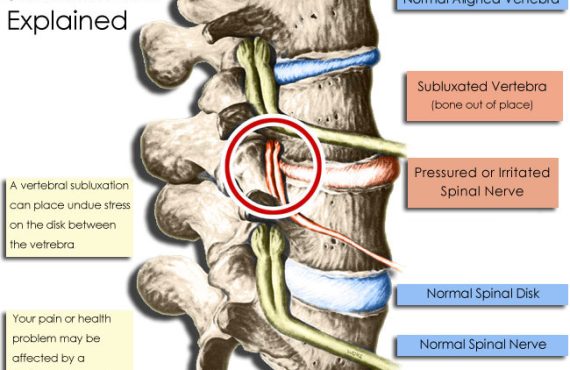If you’re facing a health issue that requires intervention, you may find yourself pondering the choice between chiropractic care and surgery. Both options have their pros and cons, and it’s essential to weigh them carefully before making a decision. At Henry Chiropractic, owned and operated by Dr. Craig Henry, you’ll find a team of experts dedicated to improving your overall health and well-being. With chiropractic care, they aim to alleviate pain and discomfort, helping you wake up feeling better each morning. On the other hand, surgery can offer more immediate and drastic results, but it also comes with potential risks and a longer recovery period. Before making your choice, consider the benefits and drawbacks of each approach to find the best solution for your specific needs.
Table of Contents
Chiropractic Care
What is chiropractic care?
Chiropractic care is a non-invasive healthcare approach that focuses on the diagnosis and treatment of musculoskeletal disorders, primarily issues related to the spine. Chiropractors use manual manipulation techniques to adjust the spine and other parts of the body, aiming to alleviate pain, improve functionality, and support the body’s natural healing process.
Benefits of chiropractic care
Chiropractic care offers numerous benefits for individuals seeking a holistic and natural approach to pain management and overall wellness. One of the key benefits is pain relief, particularly for conditions such as back pain, neck pain, headaches, and joint discomfort. Chiropractic adjustments can help reduce inflammation, improve mobility, and enhance nerve function.
Another advantage of chiropractic care is its focus on overall health and well-being. Chiropractors often provide lifestyle advice, including exercise programs, nutritional guidance, and ergonomic recommendations, to help patients achieve optimal health. This comprehensive approach supports preventive care and empowers individuals to take an active role in their own health.
Additionally, chiropractic care is a drug-free and non-surgical alternative to traditional medical treatments. This can be particularly appealing for individuals who prefer to avoid medications or invasive procedures. Chiropractic care also takes a conservative and integrated approach, working in conjunction with other healthcare providers to provide comprehensive care tailored to the individual’s specific needs.
Drawbacks of chiropractic care
While chiropractic care can be highly beneficial for many individuals, it is important to recognize its limitations and potential drawbacks. One limitation is that chiropractic care may not be suitable or effective for all conditions. Chronic and severe conditions may require more invasive treatments or specialized medical interventions.
Furthermore, chiropractic care requires consistent and ongoing treatments in order to maintain results. This can be time-consuming and may not be feasible for everyone, especially individuals with busy schedules or limited access to chiropractic facilities.
Lastly, chiropractic care is not always covered by insurance, which can make it less accessible for some individuals. However, many insurance plans do offer coverage for chiropractic services, so it is important to check with your insurance provider regarding coverage options.
Types of chiropractic treatments
Chiropractors utilize various techniques and treatments to address different issues and conditions. Some common chiropractic treatments include:
- Spinal adjustments: Manual manipulation of the spine to correct misalignments and improve spinal function.
- Soft tissue therapy: Techniques such as massage, stretching, and trigger point therapy to relax muscles and enhance mobility.
- Electrical muscle stimulation: The use of low-voltage electrical currents to stimulate muscle contractions and treat muscle spasms.
- Ultrasound therapy: The application of high-frequency sound waves to promote tissue healing and reduce inflammation.
- Cold laser therapy: The use of low-level lasers to stimulate cell regeneration, reduce pain, and accelerate healing.
The specific treatment plan will depend on the individual’s condition, symptoms, and preferences, and will be determined in consultation with the chiropractor.
Conditions treated by chiropractic care
Chiropractic care can effectively treat a wide range of conditions, including:
- Back pain and neck pain: Chiropractic adjustments can help alleviate pain and improve spinal function, providing relief for individuals experiencing chronic or acute back and neck pain.
- Headaches and migraines: By correcting spinal misalignments and reducing muscle tension, chiropractic care can help alleviate the frequency and intensity of headaches and migraines.
- Joint pain and stiffness: Chiropractic adjustments and soft tissue therapies can improve joint mobility, reduce inflammation, and relieve pain in joints such as the shoulders, knees, and hips.
- Sports injuries: Chiropractors are skilled in diagnosing and treating sports-related injuries, helping athletes recover and prevent future injuries.
- Pregnancy-related discomfort: Chiropractic care can provide relief from common pregnancy discomforts such as back pain, hip pain, and sciatica.
It is important to consult with a chiropractor to determine if chiropractic care is an appropriate treatment option for your specific condition.
Surgery
What is surgery?
Surgery is a medical procedure that involves the use of instruments and techniques to intervene in the body for diagnostic, treatment, corrective, or palliative purposes. It is typically performed by a surgeon and may involve making incisions, removing or repairing tissues or organs, or using minimally invasive methods such as laparoscopy or arthroscopy.
Benefits of surgery
Surgery can offer significant benefits for individuals facing certain medical conditions or situations. One of the primary advantages is the ability to directly address and resolve the underlying issue. Surgery can remove tumors, repair damaged organs, or correct anatomical abnormalities, leading to improved health and functionality.
Some surgical procedures can also provide immediate relief from pain and discomfort. For example, joint replacement surgeries can alleviate chronic joint pain and improve mobility, while removing a gallstone can quickly resolve abdominal pain.
Surgery can also be life-saving in cases of severe trauma or life-threatening conditions. Emergency surgeries can address internal bleeding, repair injuries, or remove obstructions, ensuring the best chance of survival.
Drawbacks of surgery
While surgery can provide numerous benefits, it is important to consider the potential drawbacks and risks associated with these procedures. One significant drawback is the invasiveness of surgery. Incisions and manipulation of tissues can lead to post-operative pain, scarring, and longer recovery times compared to non-invasive treatments.
Surgery also carries a risk of complications, including infections, bleeding, adverse reactions to anesthesia, and blood clots. Additionally, certain individuals may have specific medical conditions or factors that increase the risk of surgical complications, such as obesity or chronic illnesses.
Recovery after surgery can be challenging, requiring time off work, physical therapy, and lifestyle adjustments. It is important to have a support system in place and a comprehensive understanding of the recovery process before undergoing surgery.
Types of surgical procedures
There are various types of surgical procedures, each designed to address specific conditions or injuries. Some common types of surgery include:
- Open surgery: This involves making a large incision to directly access the surgical site, allowing for comprehensive visualization and intervention.
- Minimally invasive surgery: These procedures use smaller incisions, specialized instruments, and cameras to access and treat the surgical site, resulting in less pain, scarring, and shorter recovery times. Examples include laparoscopic and arthroscopic surgeries.
- Robotic surgery: In this approach, a surgeon operates using robotic arms and a computer console, providing increased precision and dexterity compared to traditional methods.
- Cosmetic surgery: These procedures are performed to enhance physical appearance and may include facelifts, breast augmentation, or liposuction.
- Organ transplantation: Surgical procedures involving the removal and replacement of organs, such as heart, kidney, or liver transplants.
The choice of surgical procedure will depend on the specific condition, the patient’s overall health, and the surgeon’s expertise.
Conditions treated by surgery
Surgery can be utilized to treat a wide range of conditions and injuries, including:
- Cancer: Surgery is often used as a primary treatment for various cancers, such as removing tumors or affected organs.
- Orthopedic conditions: Surgery can repair fractures, torn ligaments, or joint degeneration, providing relief and improving function.
- Cardiovascular conditions: Procedures like bypass surgery or angioplasty can address blockages or structural abnormalities in the heart and blood vessels.
- Gastrointestinal disorders: Surgical interventions can treat conditions such as appendicitis, gallstones, or inflammatory bowel disease.
- Neurological conditions: Brain surgeries can remove tumors, repair vascular abnormalities, or address epilepsy and movement disorders.
The decision to undergo surgery should be made in consultation with a qualified surgeon, who can assess the condition and provide recommendations based on individual circumstances.
Comparison
Effectiveness
When comparing chiropractic care and surgery, both have their areas of effectiveness. Chiropractic care is particularly effective for conditions related to the musculoskeletal system, such as back pain, neck pain, and joint disorders. By correcting spinal misalignments and improving nerve function, chiropractic adjustments can provide long-term relief and improved functionality.
Surgery, on the other hand, can be highly effective for addressing specific anatomical abnormalities, injuries, or life-threatening conditions. Surgical interventions often provide immediate and definitive results, resolving the underlying problem and improving overall health outcomes.
Safety
In terms of safety, chiropractic care is generally considered low-risk. Chiropractors undergo extensive training and are skilled in performing manual adjustments safely. However, certain individuals may have pre-existing conditions or risk factors that increase the potential for adverse events. It is important to disclose any relevant medical history to the chiropractor to ensure the utmost safety during treatment.
Surgery inherently carries more risks due to the invasive nature of the procedures. Although surgical techniques have significantly advanced, complications such as infections, bleeding, or adverse reactions to anesthesia can still occur. The risk of complications can vary depending on the type of surgery, the individual’s health status, and other factors. It is crucial to thoroughly discuss the risks and benefits with the surgeon before making a decision.
Cost
Cost is another factor to consider when comparing chiropractic care and surgery. Chiropractic care is generally more affordable than surgery, especially when considering the cost of consultations, treatments, and follow-up appointments. Additionally, chiropractic care may be covered by insurance, reducing the out-of-pocket expenses for patients.
Surgery, on the other hand, can be significantly more expensive due to the surgical facility fees, surgeon fees, anesthesia costs, and post-operative care expenses. It is important to consult with the insurance provider and understand the coverage and potential financial implications before opting for surgery.
Recovery Time
Recovery time is an essential consideration when deciding between chiropractic care and surgery. Chiropractic care often involves regular treatments over an extended period to achieve desired results. However, there is typically no downtime or extensive recovery period associated with chiropractic adjustments, allowing individuals to resume their daily activities immediately.
Surgery, on the other hand, generally requires a significant recovery period, which can range from days to weeks or even months, depending on the procedure. The recovery process may involve pain management, physical therapy, and lifestyle adjustments. It is important to consider the impact of the recovery period on work, family, and other commitments when choosing between chiropractic care and surgery.
When to Choose Chiropractic Care
Mild to moderate pain or discomfort
Chiropractic care is often an appropriate choice for individuals experiencing mild to moderate pain or discomfort, particularly related to the musculoskeletal system. Conditions such as back pain, neck pain, headaches, and joint discomfort can often be effectively managed and treated through chiropractic adjustments and complementary therapies.
Chiropractic care provides a drug-free and non-invasive alternative to medications or surgeries, offering natural pain relief and improved functionality. By addressing the root cause of the pain, chiropractic care promotes long-term healing and reduces the reliance on pain medications.
Prevention and wellness
Chiropractic care is not only beneficial for addressing existing pain or discomfort but also for preventive and wellness purposes. Regular chiropractic adjustments can help maintain spinal alignment, enhance nerve function, and improve overall health and well-being.
By focusing on proactive care, individuals can prevent potential issues and maintain optimal health. Chiropractors often provide lifestyle recommendations, including exercise programs, ergonomic adjustments, and nutritional guidance, to help individuals achieve and maintain a healthy lifestyle.
Conservative approach
Chiropractic care takes a conservative approach to healthcare, emphasizing a non-invasive and holistic approach to treatment. This can be particularly appealing for individuals who prefer to explore non-surgical options before considering invasive procedures.
Chiropractors work closely with patients, considering their unique needs, preferences, and values when developing a treatment plan. The conservative nature of chiropractic care aligns with the growing trend towards personalized and patient-centered care.
When to Choose Surgery
Severe pain or disability
Severe pain or disability that significantly affects daily activities may indicate the need for surgical intervention. Conditions such as severe spinal disc herniation, fractures, or structural abnormalities may require surgery to address the underlying problem and provide relief.
In such cases, surgery can offer immediate and definitive solutions, restoring functionality and improving overall quality of life. It is important to consult with a qualified surgeon who can assess the severity of the condition and provide appropriate recommendations.
Urgent or life-threatening conditions
Certain medical conditions or injuries require urgent surgical intervention to prevent further complications or save lives. Traumatic injuries, internal bleeding, or conditions such as appendicitis or an acute abdominal obstruction may require immediate surgical treatment.
In emergency situations, timing is crucial, and surgery may be the most effective and life-saving option. It is essential to seek immediate medical attention and follow the recommendations of healthcare professionals.
Other conservative treatments have failed
If conservative treatments, such as medications, physical therapy, or chiropractic care, have been unsuccessful in alleviating symptoms or improving the condition, surgery may be the next appropriate step. This is particularly true for progressive or chronic conditions that are unresponsive to other treatments.
Before making the decision to undergo surgery, it is important to consult with a healthcare professional who can evaluate the situation and discuss the potential benefits and risks.
Choosing the Right Treatment
Consulting with healthcare professionals
When trying to choose between chiropractic care and surgery, it is crucial to consult with qualified healthcare professionals. Discussing your symptoms, medical history, and treatment goals with professionals such as chiropractors and surgeons can provide valuable insights and recommendations.
Healthcare professionals can help assess the severity of your condition, explain the available treatment options, and outline the potential risks and benefits associated with each approach. Their expertise and guidance can help you make an informed decision tailored to your specific circumstances.
Considering risks and benefits
Comparing the risks and benefits of chiropractic care and surgery is essential in making a well-informed decision. Take into account the potential risks, complications, and recovery time associated with each treatment option, as well as the anticipated outcomes.
Consider your individual needs and priorities, such as pain relief, functionality, long-term healing, or immediate results. Balancing these factors and thoroughly understanding the potential benefits and risks will help you make the right choice for your specific situation.
Personal preferences and values
Personal preferences and values play a significant role in choosing the right treatment. Consider factors such as your comfort level with invasive procedures, your willingness to commit to ongoing treatments, and your overall health goals.
Reflect on your preferences for a holistic and non-invasive approach versus immediate and definitive solutions, and how these align with your personal values and beliefs. Understanding your own priorities will guide you towards the most appropriate treatment option for you.
Conclusion
Understanding the pros and cons of chiropractic care and surgery is crucial in making an informed decision about your healthcare. Both approaches have their benefits and limitations, and the choice ultimately depends on the specific condition, individual circumstances, and personal preferences.
Chiropractic care offers a natural and non-invasive approach to pain relief and overall wellness, particularly for conditions related to the musculoskeletal system. It can provide long-term healing and improved functionality, while empowering individuals to take an active role in their own health.
Surgery, on the other hand, provides immediate and definitive solutions for specific conditions, injuries, or life-threatening situations. It can address anatomical abnormalities, remove tumors, or repair damaged organs, improving overall health outcomes.
By consulting with healthcare professionals, considering the risks and benefits, and understanding personal preferences and values, individuals can make informed decisions that prioritize their health and well-being. Remember, the most important aspect is to prioritize your health and choose the treatment option that aligns with your specific needs and goals.































































